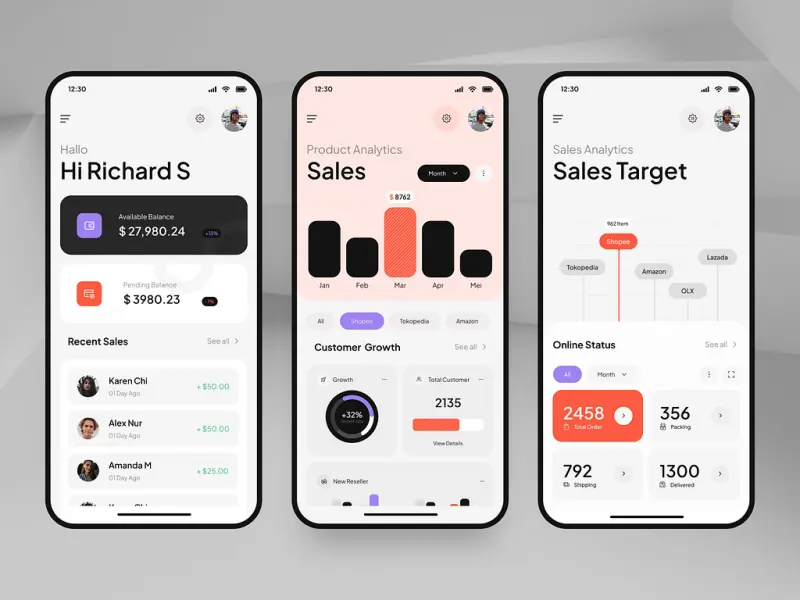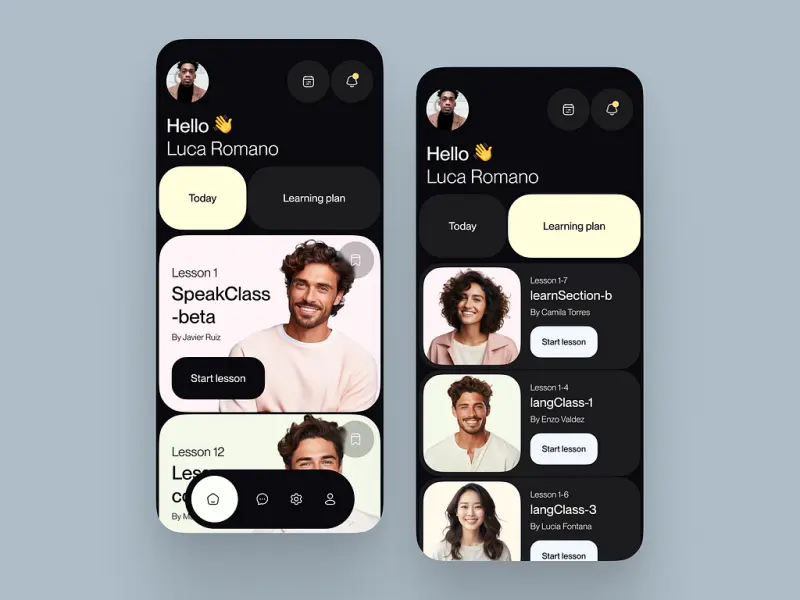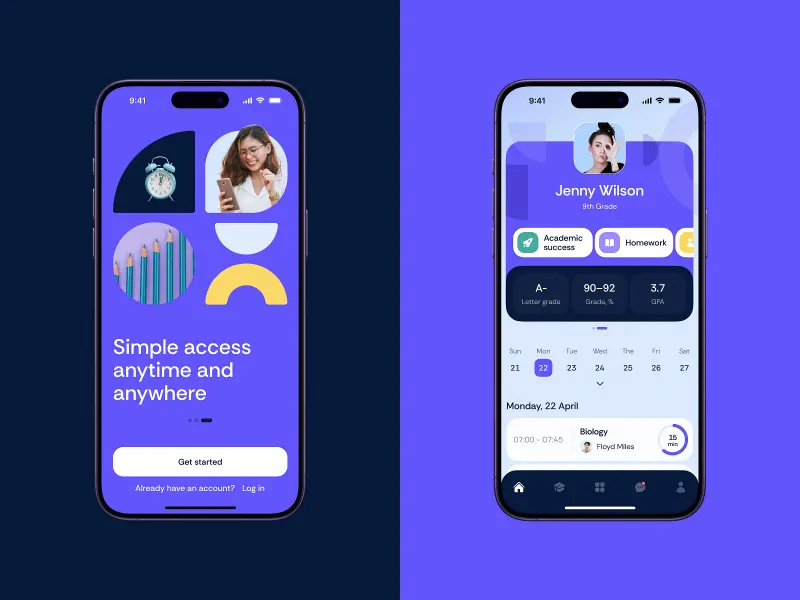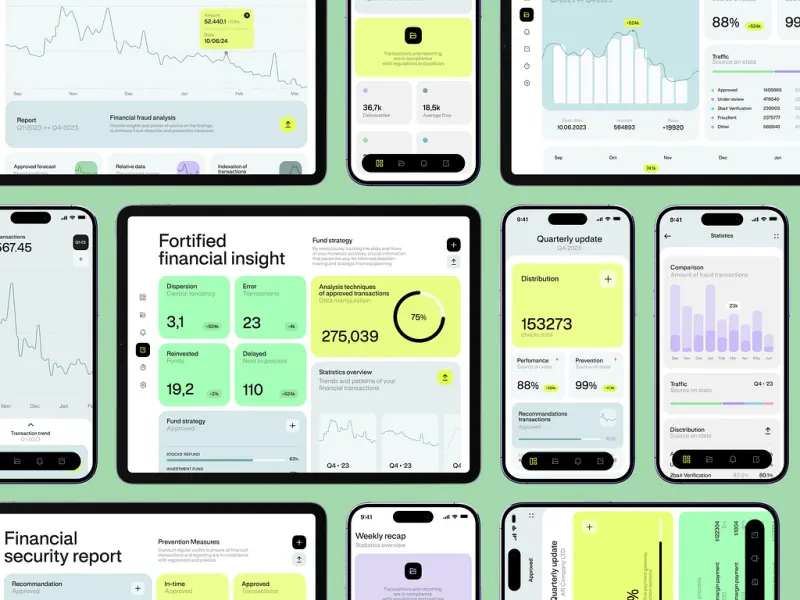Top 7 Application Modernization Tools Every Business Should Know About
- TECHVIFY Team
- 0 Comments
In today’s digital world, keeping your business apps up-to-date is key to staying competitive. It’s all about making sure your current apps can handle the fast-paced, online environment we live in now.
As businesses aim to be more efficient, scalable, and flexible, app modernization is becoming more important every day.
In fact, Statista predicts the market for legacy modernization tools could hit $36.86 billion by 2027. This shows just how big the demand is for modernization across the globe. However, it’s not always smooth sailing—nearly 75% of companies struggle to modernize their legacy systems effectively. But with the right tools, your business can avoid these pitfalls and make the transition much easier.
In this post, we’ll look at why application modernization is so important, some best practices to follow, and a few top application modernization tools to help you modernize without the headaches.
I. Why Application Modernization is So Important
Businesses today are up against a lot of competition, and modernizing your apps is one way to stay ahead. Here’s why:
Better Productivity and Efficiency
Old apps often come with slow performance and compatibility issues. By modernizing them, businesses can start using the latest tech, which boosts both productivity and efficiency.
Modern apps run smoother, making day-to-day operations easier and keeping both stakeholders and users happy. It’s all about improving processes and making the most of your resources.
Application Modernization
Lower Costs
Running outdated apps can be pricey. Over time, modernizing them can help cut down on overall costs by making operations more streamlined.
With new approaches like microservices, containerization, and cloud-based designs, you get better scalability and resilience while saving money. Automating tasks, reducing tech debt, and moving to cheaper platforms are all ways app modernization can help lower expenses.
More Flexibility and Scalability
Modernized apps are easier to scale and adapt, which helps businesses grow and respond quickly to market changes.
By using modern development techniques like DevOps, continuous integration, and containerization, companies can innovate faster, take advantage of new opportunities, and scale their apps more easily to handle growth.
Better User Experience
App modernization also means improving the user experience by updating the interface, simplifying workflows, and adding new features.
Newer apps are easier and more enjoyable to use, which keeps customers happy and coming back. By focusing on user feedback and designing with their needs in mind, businesses can create apps that meet changing expectations and keep customers loyal.
Staying Competitive
By keeping up with the latest trends, using new technologies, and bringing fresh ideas to market faster, app modernization helps businesses stay ahead of their competitors.
Upgrading your apps lets you offer innovative solutions, tap into new revenue streams, and connect with more ecosystems, APIs, and third-party services. This gives you a leg up in the market and opens up new business opportunities.
Connecting Old Systems with New Tech
Modernizing your apps also involves connecting your older systems with newer, cloud-based services. This ensures that data flows smoothly and systems work well together.
By bridging the gap between old and new, businesses open the door to more innovation and collaboration. Tools like API management and integration platforms can make it easier to get everything working in sync.
Future-Proofing Your Business
A good modernization plan focuses on flexible, scalable solutions that keep your business ready for whatever the future brings.
By using technologies like containerization and microservices, you can build apps that easily adapt to new trends and technologies. This helps ensure your business stays competitive and can evolve with the market.
II. Top Application Modernization Tools You Can Use Right Now
When modernizing your applications, selecting the right tools can make a huge difference. Below are the best application modernization tools that can help streamline your efforts and improve efficiency in your modernization initiatives:
1. Swimm: Unlock the Secrets of Legacy Code
Swimm helps developers work through old, complex codebases with ease, making it simpler to modernize outdated systems. With Swimm, teams can create, update, and share documentation directly within their workflow, ensuring everyone has the right information when they need it.
Swimm is particularly useful when dealing with legacy code, which often lacks proper documentation. Instead of spending hours trying to figure out old code, Swimm helps you understand it quickly and focus on modernization.
App Modernization
How Swimm Helps with App Modernization:
- Auto-generate documentation: Swimm’s Auto-docs feature creates comprehensive documentation for your repositories—supporting over 40 languages, including older ones like COBOL.
- Seamless integration: It integrates smoothly with your existing tools (IDEs, version control systems), so you can keep working without interruptions.
- AI-powered assistant: Swimm’s AI assistant uses internal documentation to answer codebase questions, making it easier to navigate complex systems.
- Real-time documentation updates: As you make code changes, Swimm automatically updates the documentation to stay current.
Why Swimm is a Must-Have:
- Save time on code discovery: Automated documentation allows developers to focus on modernization instead of deciphering old code.
- Boost productivity: Up-to-date, accurate documentation means less time searching and more time coding.
- Reduce errors: Reliable documentation helps avoid mistakes during the modernization process.
- Prepare for future updates: Well-maintained documentation ensures future modernization efforts are easier to manage.
2. AWS Migration Hub: Centralize and Simplify Cloud Migrations
AWS Migration Hub provides a centralized platform to manage and track the migration of applications, servers, and databases to the cloud. It helps streamline the migration process by keeping everything organized and ensuring you can track progress across all your projects.
AWS Migration Hub is especially useful for businesses moving multiple applications or servers to the cloud, helping to manage complex environments more effectively.
How AWS Migration Hub Helps with Modernization:
- Track migration projects: See the progress of all your migration tasks in one place, ensuring you know how everything is moving along.
- Centralized management: Monitor all migration activities from a single dashboard, even when using different AWS tools or third-party services.
- Planning and execution: AWS Migration Hub provides insights into your current environment, helping you plan migrations and prioritize which apps to move first.
Why AWS Migration Hub is Key:
- Simplifies migration management: With all your migration tasks in one place, it’s easier to keep track of progress and stay organized.
- Improves visibility: You’ll always know where you are in the migration process and what needs attention.
- Supports better planning: AWS Migration Hub helps reduce surprises by providing insights into your current setup and tracking progress.
- Reduces complexity: Migrations can be complicated, but AWS Migration Hub simplifies the process by centralizing everything in one platform.
3. Red Hat OpenShift: Master Kubernetes and Container Management
Red Hat OpenShift is a powerful platform that helps you build, deploy, and manage containerized applications at scale. Built on Kubernetes, OpenShift simplifies managing modern applications, whether they’re on-premises or in the cloud, and includes integrated CI/CD tools to speed up development.
How Red Hat OpenShift Accelerates App Modernization:
- Deploy applications easily: Use OpenShift’s intuitive web console or CLI to deploy containerized applications quickly.
- Automated container management: OpenShift handles tasks like scaling and updating applications automatically, so you don’t have to manage containers manually.
- Built-in CI/CD tools: OpenShift comes with continuous integration and delivery capabilities, helping you automate build and deployment processes.
Why Red Hat OpenShift is Ideal for Modernization:
- Simplifies Kubernetes management: OpenShift makes Kubernetes more accessible with a user-friendly interface and additional tools.
- Speeds up development: Integrated CI/CD pipelines help you improve development cycles and deploy faster.
- Enhances security: OpenShift offers robust security features to protect your applications and data, crucial for modernizing critical systems.
4. Kubernetes: Streamline Your Container Management
Kubernetes is crucial for modernizing applications. It’s an open-source platform that helps you manage containerized apps across different environments—whether in the cloud, on-premises, or both. It automates a lot of the heavy lifting, like deployment, scaling, and failover, so you don’t have to worry about the nitty-gritty details.
How to Use Kubernetes for App Modernization:
- Containerize Your Application Components: Break your app into smaller pieces and package each piece into containers, so they have everything they need to run.
- Create Kubernetes Manifests: Use YAML files to define how your app should run—things like configuration, resources, and deployment details.
- Deploy to a Kubernetes Cluster: Use the
kubectlcommand to deploy your app. Kubernetes will handle the rest, including keeping your app running and automatically scaling it when needed. - Leverage Kubernetes Services: Use Kubernetes services to manage how your app’s components talk to each other and to expose your app to the outside world.
- Monitor and Maintain: Keep an eye on your app’s health, and let Kubernetes handle things like restarting containers if they fail.
Benefits of Using Kubernetes for App Modernization:
- Automation: Kubernetes automates a lot of the manual tasks, like scaling and failovers, which saves time and reduces errors.
- Flexibility: Run your app on any platform—cloud, on-premises, or a hybrid setup—without needing to worry about compatibility.
- Resilience: Kubernetes keeps your app running smoothly, even if something goes wrong with the underlying infrastructure.
5. AppDynamics: Keep Tabs on Your App’s Performance
AppDynamics by Cisco is all about making sure your app performs well. It gives you real-time insights into how your app is doing, helping you spot problems before they affect users. Plus, it lets you see how your app’s performance impacts your business, like user engagement or revenue.
Application Modernization Tools
How to Use AppDynamics for App Modernization:
- Monitor App Performance: AppDynamics continuously tracks key metrics like response times and error rates, so you can catch issues before they affect your users.
- Visualize Application Flow: You get a visual map that shows how different parts of your app interact. This helps you spot bottlenecks or weak points.
- Set Alerts and Automate Responses: Set up alerts for when performance dips below a certain threshold. AppDynamics can even trigger automatic responses, like scaling resources or sending alerts to your team.
- Analyze Business Impact: Connect your app’s performance to business metrics, like how slow load times are affecting user engagement or sales.
Benefits of Using AppDynamics for App Modernization:
- Faster Issue Resolution: Quickly spot and fix performance issues before they become a problem for users.
- Comprehensive Visibility: Get a clear picture of your entire application environment, making it easier to manage complex systems.
- Proactive Performance Management: Stay ahead of issues with real-time monitoring and alerts.
- Data-Driven Decisions: Use performance data to make informed decisions that align with your business goals.
Looking to Outsource Development?
Contact TECHVIFY – Vietnam’s Leading Offshore Software Development & Outsourcing Company, for consultation and development services.
6. Docker: Make Your Legacy Apps Easy to Manage
Docker is a great tool for modernizing legacy applications by turning them into containers. Containers are lightweight, portable, and can run anywhere, making it easier to manage, scale, and deploy your old apps in modern environments without having to rewrite everything from scratch.
How to Use Docker for App Modernization:
- Containerize Legacy Apps: Package your legacy apps into containers, along with all their dependencies. This makes them portable and ensures they’ll run the same way anywhere.
- Simplify Deployment: Once containerized, apps can be deployed across different environments consistently, so you don’t have to worry about the “it worked on my machine” problem.
- Streamline Maintenance: Containers isolate your apps, making it easier to update or fix bugs without affecting other parts of your system.
Benefits of Using Docker for App Modernization:
- Ensures Consistency: Containers make sure your app runs the same way across different environments, whether on-premises or in the cloud.
- Reduces Modernization Costs: Instead of rewriting everything, you can containerize your legacy apps and run them in modern environments.
- Gradual Modernization: Docker allows you to modernize your apps one piece at a time, so you don’t have to do a full overhaul all at once.
- Enhances Security: Containers provide an extra layer of isolation, adding security by preventing issues in one container from affecting others.
7. Kyndryl: Modernize Your Legacy Systems with Tailored Solutions
Kyndryl is an IT services provider that helps businesses modernize their legacy apps and infrastructure. They offer customized solutions to transform outdated systems into flexible, scalable, and secure applications that can keep up with today’s business needs. Whether you’re looking to move to the cloud or just make your old systems more efficient, Kyndryl has you covered.
How Kyndryl Supports the App Modernization Process:
- Assessment and Strategy: Kyndryl starts by checking out your current systems to figure out what needs to be modernized. Then, they help you map out a strategy that lines up with your business goals, whether that’s boosting performance, cutting costs, or tightening security.
- Legacy System Transformation: Kyndryl handles the heavy lifting of updating legacy systems. They can rehost (move to new infrastructure), replatform (upgrade the tech stack), or refactor (tweak the code) your apps to run better on modern platforms.
- Cloud Migration: As part of modernization, Kyndryl can help move your apps to the cloud. This gives you more flexibility, better scalability, and usually some cost savings. Plus, you can start using cloud-native features to get even more out of your systems.
- Data Modernization: Kyndryl also focuses on modernizing your data infrastructure. They help with database migrations and improve data management practices to make sure your data is secure and easy to access.
Benefits of Using Kyndryl for App Modernization:
- Reduced Risk: With their expertise, Kyndryl lowers the chances of things going wrong during the upgrade, like downtime or system failures.
- Improved Performance and Scalability: Your modernized apps will run faster and be able to scale up to meet growing business needs.
- Cost Efficiency: Updated apps typically need less maintenance and can be cheaper to run, especially if they’re in the cloud.
- Future-Proofing: Kyndryl makes sure your apps are set up to handle future tech changes, so you won’t have to worry about falling behind.
III. How to Choose Your Right Application Modernization Tools
When you’re picking application modernization tools for updating your apps, it’s important to take a thoughtful approach. You’ll want to consider your current systems, your business goals, and your technical needs. Here are some simple steps to guide you through the process:
Step 1: Take Stock of Where You Are
Start by making a list of all your existing apps, their dependencies, and the infrastructure they run on.
Look at how each app is performing in terms of speed, security, scalability, and how easy it is to maintain.
Identify key apps that are crucial to your business, the ones that are falling behind, and any gaps you need to fill.
Pinpoint the challenges and limitations of your current setup. This will help steer your modernization efforts in the right direction.
Modernize App
Step 2: Set Clear Objectives
Make sure your modernization efforts align with your broader business goals. Are you looking to improve the customer experience, cut costs, or make things more agile?
Set specific, measurable technical goals too, like improving performance, boosting security, or enabling better scalability.
These goals will help guide the modernization process and give you a way to measure success.
Step 3: Understand What’s Required
Figure out which features and functionalities of your current apps you need to keep or improve as you modernize.
Consider the performance, security, compliance, and scalability needs to make sure the modernized apps are solid and reliable.
Plan how these updated apps will fit with your existing systems and workflows to ensure everything runs smoothly.
Step 4: Make Sure It Can Scale
Pick tools that work well with your current tech stack and integrate easily with your existing systems.
Look for tools that offer flexibility and can support different modernization approaches, whether you’re rehosting, refactoring, or rearchitecting.
Choose tools that can grow with your business and handle future expansion without a hitch.
IV. Best Practices for Application Modernization
Here are some best practices to keep in mind as you modernize your apps:
- Evaluate Your Current Setup
Take a close look at your existing apps, infrastructure, and business processes. This will help you identify where improvements are needed and set your priorities for modernization. - Set Specific Goals
Clearly define the goals and key performance indicators (KPIs) for your modernization project. Make sure these goals align with your overall business priorities. - Prioritize Your Apps
Rank your apps based on their business impact, the amount of technical debt they carry, and how practical it is to modernize them. Start with the high-value apps that offer the greatest potential for improvement. - Choose the Right Tools and Tech
Pick tools and technologies that fit your company’s needs. Think about things like compatibility with your existing systems, security, and how well they scale. - Adopt Agile and DevOps Practices
Using Agile and DevOps methodologies can improve collaboration, speed up the modernization process, and ensure you’re delivering value at every step. - Invest in Training
Make sure your teams have the training and skills they need to effectively use the new tools and technologies. This will help them get the most out of your modernization efforts. - Monitor Your Progress
Set up systems to track your progress. This will help you spot any roadblocks and make adjustments as needed throughout the project. - Keep Improving
Use feedback and lessons learned to continuously refine your modernization strategies. This will help you stay adaptable as your business and technology needs evolve. - Get Expert Advice
Don’t be afraid to seek advice from industry experts, forums, or colleagues. Their insights can help you avoid common pitfalls and make smarter decisions. - Plan for Growth
Choose solutions that are scalable and can grow with your business. This way, you’ll be ready for future changes in both your business and technology needs. - Create a Detailed Plan
Lastly, put together a detailed implementation plan. Outline the resources you’ll need, set timelines, assign tasks, and make sure you have clear deadlines for each part of the project.
Conclusion
App modernization is no longer just a nice-to-have—it’s essential for staying competitive in today’s fast-paced digital landscape. Whether you’re looking to boost efficiency, reduce costs, or improve your customer experience, modernizing your legacy systems can open up new growth opportunities. With the right tools and strategies, you can transform your outdated apps into agile, scalable, and future-proof solutions.
However, app modernization isn’t always easy—many businesses struggle to navigate the complexities of updating their systems. That’s where having the right partner can make all the difference.
At TECHVIFY, we specialize in helping businesses like yours modernize their apps and infrastructure. Whether you’re looking to rehost, refactor, or migrate to the cloud, our team of experts is here to guide you through every step of the process.
With our free consultation, you’ll get personalized advice tailored to your specific needs—no strings attached. Contact TECHVIFY today for a free consultation and take the first step towards modernizing your business for tomorrow’s challenges.
TECHVIFY – Global AI & Software Solutions Company
For MVPs and Market Leaders: TECHVIFY prioritizes results, not just deliverables. Reduce time to market & see ROI early with high-performing Teams & Software Solutions.
- Email: [email protected]
- Phone: (+84)24.77762.666









